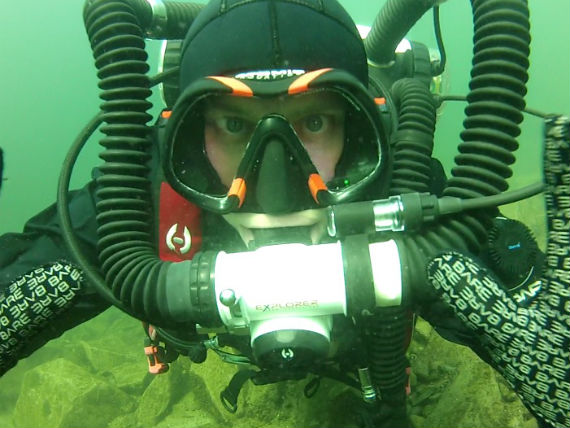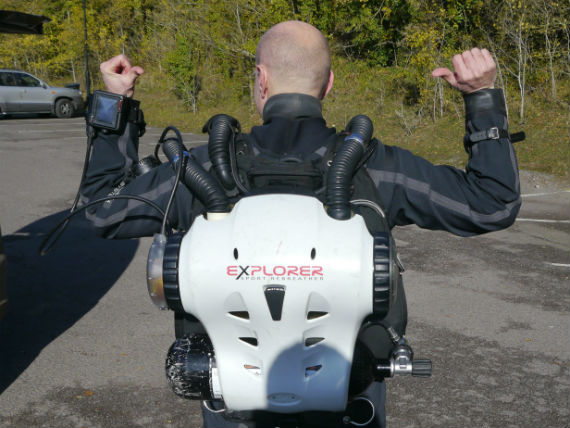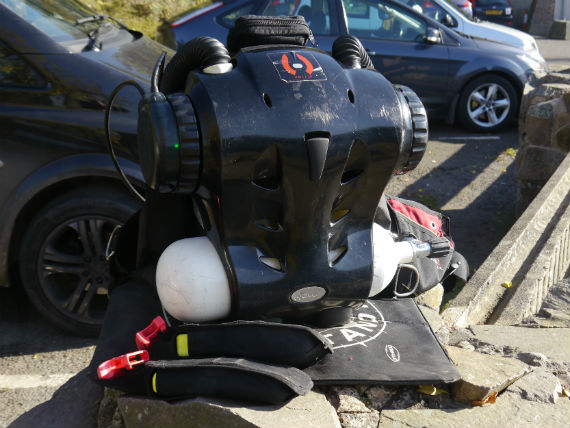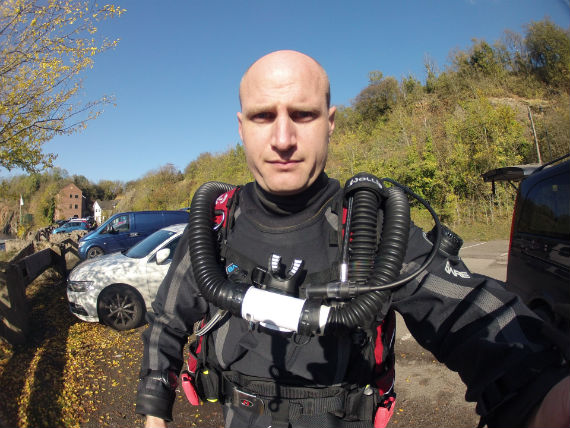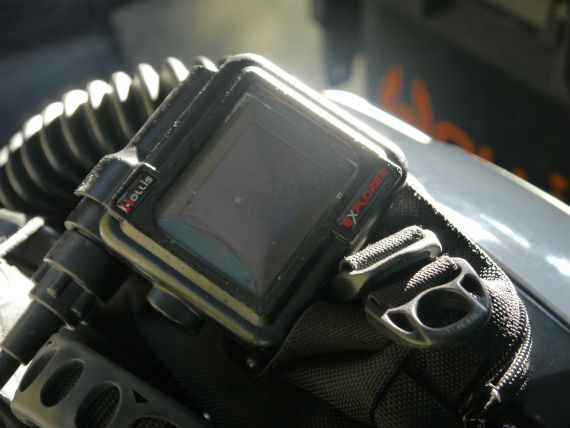Hollis Explorer rebreather
Could the Explorer be the machine to take closed circuit diving mainstream?
Purists may dismiss it, but the Hollis Explorer sport rebreather is the closest thing yet to a CCR for the masses.
Search the website of an online retailer such as Simply Scuba and under the ‘rebreathers’ section the Explorer is the sole offering –and yours with just the click of a mouse. That makes it unique in the market right now where open circuit diving rules the roost, particularly for recreational divers.
unique in the market right now
The precondition to purchasing an Explorer is that would-be owners must be trained to dive a rebreather, as well as certified to use that specific machine. There are Hollis trainers dotted around the UK but I contacted Matt Robinson, who is Hollis UK’s training director and MD of Midlands Rebreather Diving. We met at Stoney Cove for a try dive on this compact model that was first introduced here in 2012 and is growing in popularity.
Quite a few CCRs betray both their hobbyist origins and the engineers who invariably designed them by looking like bits of plastic pipe screwed to a metal frame. In contrast, the Explorer has a stunning visual look that is a cross between a Stormtrooper’s day bag and a jetpack: partly this is achieved by having fewer components (I’m coming to that) but also a determination to create a genuine piece of eye candy. It’s a real head-turner, thanks to a streamlined fairing cover attached to a black and red wing or BCD, and white mouthpiece with built-in bailout valve (BOV.) Fastening around the left wrist is the Hollis computer, linked to a head-up display (HUD) clipped on to the mouthpiece. The HUD shows green for everything is ok, flashing blue for ‘look at your computer, I want to tell you something’, or red – which means it’s time to bail out.
It’s a myth that rebreathers are complicated explains Matt, removing the cover. The top half contains the electronics and scrubber, while the bottom has a standard 5-litre cylinder containing a nitrox mix. The counterlungs also sit inside the box. In essence that’s it: the user is breathing into a bag with sodium hydroxide removing the CO2 from the loop. A focus on simplicity has kept the unit’s size to a minimum.
The Explorer has been designed to take a lot of the manual tasks out of rebreather diving, so it undergoes a total of eight checks before it can be used. I’m prompted to check the system is pressurised, that there is breathing resistance, and that the BOV is working, for example. At each stage the user is unable to proceed until the test has been passed. Finally, I have to breathe off the unit for a minute (5 minutes if the optional CO2 sensor is not fitted) and we should have a green light on the HUD.
Designer Kevin Gurr (of VR Technology fame) designed the Explorer’s electronic brain to use voting logic, albeit with a slight twist. The principle is as follows: with only one O2 sensor, the user wouldn’t recognise a faulty reading. Two sensors giving different readings would only show that a least one was faulty, but which one? That’s why manufacturers install at least three cells and accept the two closest. However, Matt explains the Explorer takes the average reading from the three values instead and continues to operate within a specified range.
Good to go – Matt and I gear up and splash in. I’d been pre-warned that the biggest challenge I’d face would be buoyancy. Because I’m breathing in to and out of a bag, the volume of gas isn’t changing so making adjustments in trim to my BCD and suit are far more important. Otherwise the sensation is awesome. It’s far quieter than open circuit, even with the injector firing gas into the loop somewhere behind my head. I wanted to test the dive industry assertion that ‘fish would swim right up to me, unafraid because of the lack of bubbles’, and I think it’s true – we were surrounded by Perch and later some rather large Pike.
Hollis has designed the Explorer as a recreational CCR to use a nitrox mix, and like any nitrox dive is strictly limited to the appropriate depth of the gas. The difference is one of duration: my computer shows 90 minutes max run time at the start, although Matt tells me this will continuously recalculate, based on my breathing rate. The HUD never once flickered blue but I keep a close eye on the computer and only use about 50 bar during the hour-long dive.
This is rebreather diving at its most simplified, and almost any other unit on the market seems to me to be in some way more complicated. The Explorer’s gas supply is just a 5-litre cylinder filled with standard Nitrox, and the scrubber can be refilled for about £4 (Hollis decided against pre-packed cartridges for reasons of cost.) The three O2 cells last approximately 18 months and are about £65 each to replace, and the unit needs servicing periodically for wear and tear – mushroom valves, o-rings and battery. But otherwise, running costs are not prohibitive. It’s the £4000 purchase price that’ll prove divisive.
Deep wreck or technical divers will want a more modular, flexible CCR that can handle extreme conditions and depths. The Explorer will clearly not work for them. But for recreational divers who just enjoy being underwater as I do, the Hollis sport rebreather makes perfect sense.

